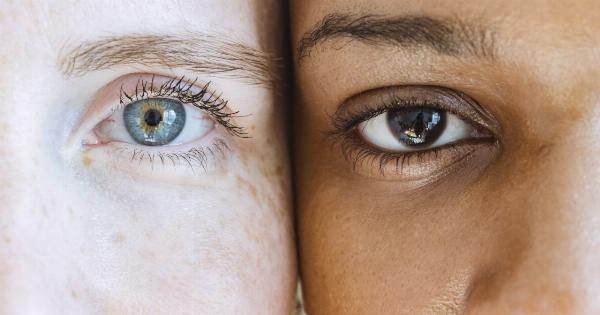Hazel eyes are often considered one of the most beautiful eye colors, with their combination of brown, green, and amber hues. Beyond their aesthetic appeal, hazel eyes can also provide insight into a person’s health.
In this article, we will explore what hazel eyes can reveal about various health conditions and potential risks.
1. Melanoma risk
One potential health concern associated with hazel eyes is an increased risk of melanoma. Melanoma is a type of skin cancer that can develop in the eyes as well.
Research suggests that individuals with lighter eye colors, including hazel eyes, may be more susceptible to developing ocular melanoma.
It is important for those with hazel eyes to be vigilant about protecting their eyes from harmful UV rays by wearing sunglasses and using protective eyewear. Additionally, regular eye exams can help catch any potential abnormalities early on.
2. Sun sensitivity
Hazel eyes are known to be more sensitive to sunlight compared to darker eye colors. The melanin pigment, which determines eye color, is less concentrated in individuals with hazel eyes.
This reduced melanin can lead to increased sensitivity to bright lights and sunlight.
People with hazel eyes may experience discomfort or even pain when exposed to bright lights. They may find it helpful to wear sunglasses or seek shade in order to minimize the discomfort caused by sun sensitivity.
3. Higher risk of cataracts
Studies have shown that individuals with lighter eye colors, including hazel eyes, may be at a higher risk of developing cataracts.
Cataracts are characterized by the clouding of the lens inside the eye, leading to blurry vision and decreased visual acuity.
Regular eye check-ups are essential for individuals with hazel eyes to monitor the health of their eyes and detect the early signs of cataracts. If cataracts are detected, surgical intervention can help restore vision and improve quality of life.
4. Age-related macular degeneration
Hazel eyes may also indicate a higher risk of age-related macular degeneration (AMD). AMD is a progressive eye condition that affects the macula, resulting in the loss of central vision.
Early detection and intervention are crucial in managing AMD. Individuals with hazel eyes are advised to have regular eye exams to identify any changes or abnormalities in their macula.
5. Eye conditions and allergies
Having hazel eyes does not necessarily mean a higher risk of eye conditions or allergies. However, hazel-eyed individuals may be more prone to developing certain eye conditions or experiencing allergies due to their lighter eye color.
Conditions such as dry eyes, conjunctivitis, and eye infections may be more prevalent among those with hazel eyes. Proper eye hygiene, regular eye exams, and prompt treatment can help prevent and manage these conditions effectively.
6. Genetic predispositions
Eye color, including hazel, is determined by complex genetics. Certain genetic variations associated with hazel eyes may also be linked to other health conditions or predispositions.
For instance, some studies suggest that individuals with hazel eyes may have a higher risk of developing certain autoimmune disorders, such as multiple sclerosis.
However, further research is needed to establish a definitive correlation between hazel eyes and autoimmune conditions.
7. Psychological impact
While not directly related to physical health, eye color can have psychological implications. People with hazel eyes may experience unique perceptions and expectations from others due to their eye color.
Hazel eyes are considered mysterious and captivating, often associated with traits such as creativity and intuition. This perception may influence interpersonal relationships and self-esteem.
8. Eye care for hazel-eyed individuals
Given the potential health risks associated with hazel eyes, it is crucial for individuals with this eye color to prioritize their eye health. Here are some tips for eye care:.
– Wear sunglasses with 100% UV protection outdoors to shield your eyes from harmful rays.
– Avoid prolonged exposure to bright lights and direct sunlight.
– Practice good eye hygiene, including regularly washing your hands before touching your eyes.
– Get regular eye exams to monitor your eye health and detect any issues early on.
– If you experience discomfort or vision changes, consult an eye care professional immediately.
9. Embrace your hazel eyes
Hazel eyes are inherently unique and beautiful. While they may carry certain health risks, it is important to remember that eye color alone does not determine an individual’s overall health.
Instead of focusing solely on potential health concerns, embrace and celebrate your hazel eyes. Take appropriate measures to protect your eyes and address any specific eye conditions that may arise.
10. Conclusion
Hazel eyes can be a window into our overall health. While they may suggest a higher risk of certain eye conditions, having hazel eyes should not cause unnecessary worry or stress.
By practicing good eye care habits and maintaining regular eye exams, individuals with hazel eyes can protect their vision and enjoy the unique beauty of their eyes.






























